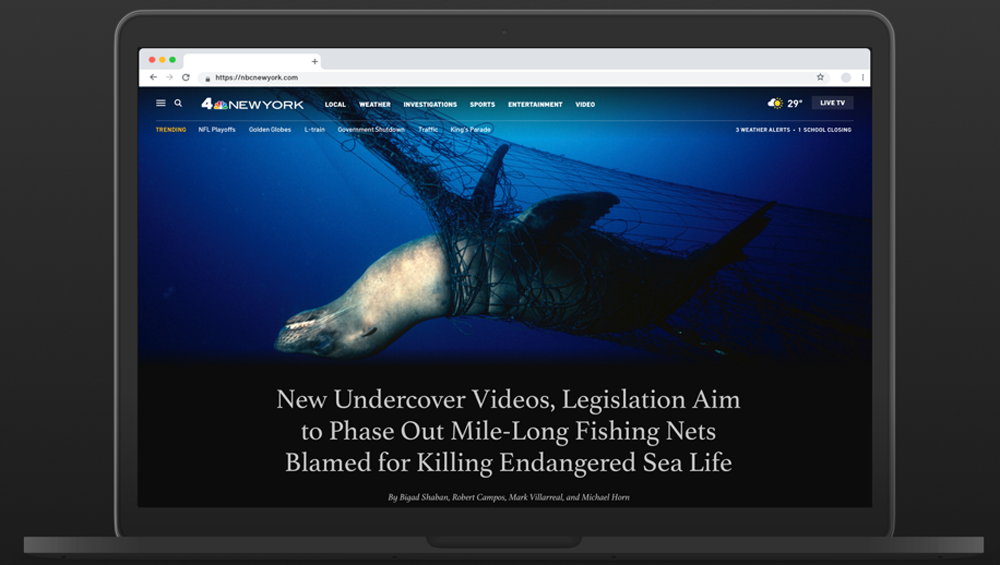
TVN Focus On Digital | Behind NBCU’s Digital Overhaul

Last month, NBCUniversal Owned Television Stations announced the overhaul of both the consumer front-end experience and editorial back-end interface for its web and mobile web digital products by creating a brand-new content management system (CMS) that rolled out across all 42 NBC and Telemundo stations.
The new system is designed to provide a consumer interface that is easier to navigate with a bigger focus on live video, while providing a more powerful, streamlined production workflow for the stations’ journalists.
The new home-grown CMS was built on the WordPress VIP hosting platform by the NBCU stations’ own software programming team, with help from Web development firm Alley Interactive. It replaces the group’s previous CMS from Clickability, which the stations had been using since 2008.
That platform was starting to experience performance and stability issues, and though it had gone through several redesigns, didn’t offer the level of flexibility that the NBCU stations need to present digital news in 2020.
“We were on it for over 10 years, and think how much the digital landscape has changed in 10 years — it’s pretty monumental,” says Josh Kleinbaum, VP of digital news for NBCUniversal Owned TV Stations.
More Journalist-Friendly Feature

Josh Kleinbaum
Kleinbaum notes that when the company started on Clickability its stations didn’t yet have social media accounts for Facebook or Twitter accounts, because that wasn’t a thing yet. “So we needed a platform to meet the change in the last 10 years and support us in all of the different ways we publish content,” he says.
For example, including a tweet in a story in the previous CMS required about 13 or 14 individual steps to get it to display properly across NBC’s various digital platforms, Kleinbaum says. With the new system, an editor simply has to paste the URL of a tweet into the body of a story, and the system automatically recognizes that the URL is from Twitter, goes to that platform to grab the embed code, plugs it in and stylizes it to ensure it looks good on desktop, mobile web and apps.
“That is example of something that was ridiculously difficult beforehand that is now ridiculously easy, and it’s used often,” Kleinbaum says.
Another new journalist-focused feature is making it easier to share content across multiple stations by allowing a station to produce both a market-specific version of a local story and a more generic one, where previously NBCU’s stations had to push an identical story to every market with the old CMS.
For example, a story from the Los Angeles site might have a paragraph of detailed information that would be germane only to L.A. readers, and journalists can now easily replace that paragraph with one that has more generic information for distribution in Chicago, New York and Miami.
In-depth content that has extensive reporting behind it, such as features produced by a station’s investigative team, can also now be presented with a premium “magazine-style” look that can bring in various interactive elements or feature a dark background with white text.
Simple Mandate, Complex Process
Simplification was a major focus in designing the new CMS, both in the journalist interface and the consumer experience. Ten-plus years and various iterations of the Clickability CMS across the individual station Websites had resulted in a myriad of different templates created for publishing content, adding complexity to the workflow, says Pranav Kamkhalia, VP of product development for the group.

Pranav Kamkhalia
In the overhaul, the NBCU development team looked to standardize templates and greatly reduce the overall number of templates used, making it easier for everyone in the newsroom to contribute to digital platforms, not just the digital team.
“One of my goals was moving to a system that is intuitive and easy to use, and someone who’s not in it all the time can hop in and publish content and contribute to digital,” Kamkhalia says. “That was something we definitely didn’t have before but we do have today.”
Creating the new CMS was an expansive project, says Kamkhalia, who notes that the CMS is the nexus for not just a station’s Web and mobile Web platforms but all of its other digital offerings, including all apps, OTT services like Roku and Apple TV, Amazon Echo integration, RSS, syndication and out-of-home products like taxi TV services.
The project included code-writing from scratch for desktop, mobile web, app APIs and feeds across 35 sites that serve users in English and Spanish, along with the migration of four to five million individual pieces of content. Testing the system to make sure it worked with the current APIs as well as older versions, as well as providing the necessary redirects, was crucial to avoid traffic loss.
“When we moved from one system to another, we had to make sure the user designs are rendering and behaving and functioning as expected, but more importantly, the backwards compatibility of the products that are out there are not broken and had to be thoroughly tested,” Kamkhalia says.
Company-Wide Training
The new CMS rolled out in three different tranches across eight days from early to mid-December 2019. The first tranche had three stations launch, followed by NBCU’s 12 duopolies, then the remaining stations moved to the new platform.
Because of the timing of the November sweeps, editorial training for the new platform actually occurred much earlier, back in October.
NBCU digital staffers split into three two-person teams and hit the road, spending two days at each duopoly, training NBCU and Telemundo journalists from the entire newsroom, not just the digital team.
Another team focused on the standalone Telemundo stations with a “hubbed” approach, holding multiple training sessions in Florida, Nevada and California that brought in Telemundo journalists from stations in close geographic proximity.
The training visits featured four or five discreet sessions focused on teaching different functionalities, with different staffers attending one or more depending on their roles in the newsroom. In late November and early December, the week before launch, the NBCU stations’ digital team then did refresher sessions over Webex, and individual stations also offered personnel retraining as needed.
“All of the training was not just digital team training, it was pretty much entire newsroom training,” Kleinbaum says. “We did the math at one point, and we trained upwards of 1,000 journalists in really a two-week period in October, which was pretty incredible.”
A New Interface
The new homepage for each station places a heavy emphasis on breaking news coverage and more prominently features video clips, as well as each station’s live news feed when available.
In addition to the previously mentioned “feature article” page for in-depth content, other new features include a “trending” topics line at the top of the page; a radar screen highlighting the latest weather captured by the NBCU stations’ own high-powered “StormTracker” radars; a new font consistent across desktop and mobile platforms; easier navigation and better search capability; and new advertising experiences including a “masthead” ad position on the top of the page.
“One of the things we really focused on was the presentation of breaking news events,” says Daniel Alvarez, VP of product and design for NBCUniversal Owned TV Stations. “We know how important breaking news events are for local stations, and we took a look back historically at the type of breaking news events that we cover and the amount of content that we cover around each event.”

Daniel Alvarez
Based on that analysis, NBCU’s design team created a different set of “levels” that stations can use to present breaking news, from when they first learn of a story but have scant information; moving on to when a story escalates in importance; and then when it becomes the major story, such as a natural disaster.
The eventual goal with a major news event, says Alvarez, is to provide a “one-stop shop” on a station’s homepage for viewers to go to in order to find all the information about an event.
Likewise, the “trending” topics line is manually curated by station journalists and is intended to let them highlight important content based on their own local editorial perspective, not computer algorithms. Stations can use the “trending” links to either send users to a landing page where they might have multiple stories about a topic, or to simply drive them to a specific story.
Alvarez thinks the new “masthead” ad position offered by the new platform at the top of the homepage is also a big improvement for both users and advertising clients compared to where major advertisers were previously positioned, which was directly after the navigation menu. That meant that users would be scrolling through the homepage, their viewing experience would be interrupted by the ad and then they would come back to the station’s content.
“From a user experience perspective, it’s a little bit less disruptive, but from a client perspective, it is more prominently displayed,” Alvarez says.
“The fact it’s at the top of the page, it is also a bigger canvas,” he says. “So although we do support all the legacy traditional ad units, it also does support bigger ad units that provide a more impactful delivery for the client. They can have video or a little more prominent image that corresponds to their brand.”




































Comments (0)